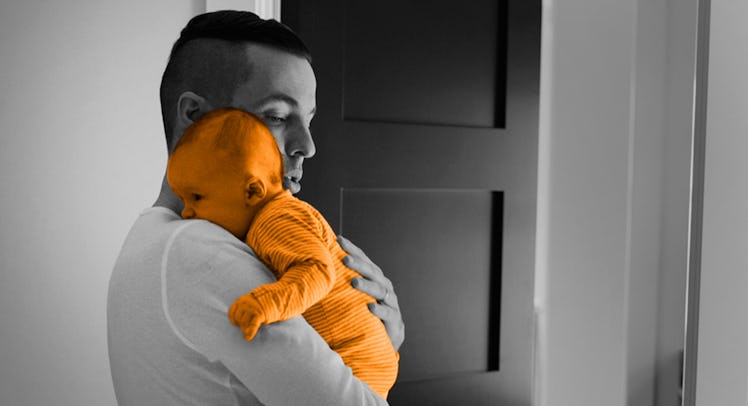How to Share Sleep Training with Your Partner
Teaching baby to become an independent sleeper alone is hard. Here's how to make it a team effort.

Sleep training, the art of teaching your baby to become an independent sleeper (no parental soothing required), is best when it’s a team effort. “When you start removing your baby’s external sleeping crutch, whether that’s being breast fed to sleep or sucking on a pacifier or being rocked, we often get tears,”, says Dr. Sarah Mitchell, a sleep consultant and the founder of Helping Babies Sleep. “And while you rationally understand why, it’s still just really hard to hear your baby cry.” The biggest benefit, then, of sharing sleep training with your partner could very well be the emotional support. And part of the power of having that emotional support is that it makes parents more likely to stay consistent with their sleep training method, which ultimately makes sleep training easier for everyone, especially baby.
Mitchell also advises her clients that having dad heavily involved in sleep training can be a secret weapon. “Most babies have a stronger soothing association with the mother, as the one who is often doing most of the feeding,” says Mitchell. “When you’re working on removing the sleep crutch and it’s the dad who comes in to do the checks, the baby will typically cry for a shorter period of time.”
RELATED: Common Myths About Sleep Training
Parents who intend to share sleep training should start with the research phase, which can be more involved than anticipated because there are so many different sleep training methods out there. And “just pick one,” isn’t going to get you very far. One thing many sleep consultants agree on is that the choice is highly personal, and should account for the temperament of the parents, as well as the temperament of the baby.
A good way for parents to ease into sleep training as a team is to agree on a bedtime wind-down routine for baby — such as feed, bath, jammies, cuddle, and story time (yes, even newborn babies love story time for the sound of your voice) — and then alternate which parent puts baby to bed each night.
The formal sleep training can begin as early as four months, when baby’s nervous system is developed enough to self-soothe, and when baby can be reasonably expected to go for longer stretches of sleep at night. Depending on the sleep training method you’ve chosen, there will be different ways to divide the responsibilities. Some parents alternate “on duty” nights. Others split the night into two shifts: the parent who wasn’t the one to do the bedtime routine takes the first nighttime shift. Others use Mitchell’s secret weapon of putting dad on night check duty.
MORE: How to Sleep Train With the ‘Cry it Out’ Method
However you split the responsibilities, Mitchell offers the gentle reminder that parents may differ in what sounds they’re tuned into. There’s some scientific evidence to support “mom ears,” which seem to wake the mother if baby so much as gurgles, or enable her to wake faster and more attentive when baby cries. There’s also research that says women and men are disturbed by different sounds in the night. In general, there are a bunch of reasons why one parent may wake to baby’s 2:00 a.m. fussing while the other does not. These can range from what stage of sleep each parent was in, to what kind of workday each parent had. Keep in mind that almost none of these have to do with the “on duty” parent not wanting to pull his (or her) weight. Best case scenario, everyone in your household will soon be sleeping better after your tag-team sleep training begins. For everything else, there’s couple’s therapy.
This article was originally published on